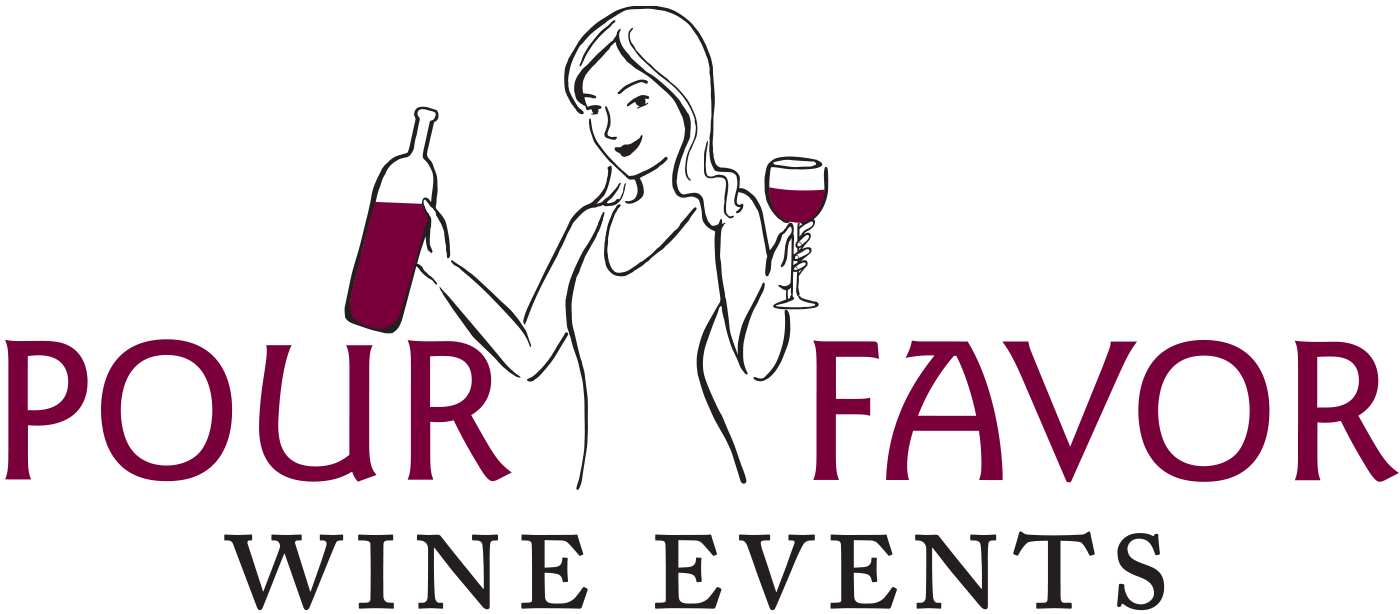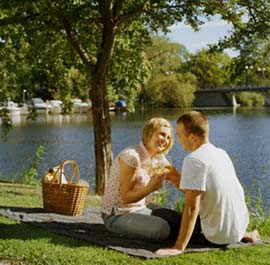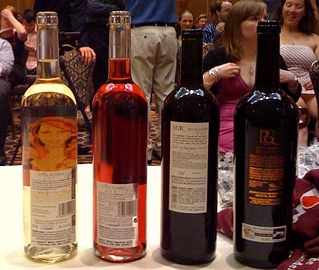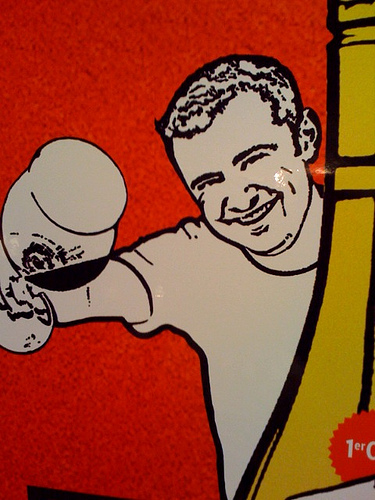 If you watched the final match of the 2008 Euro Cup (Spain won vs. Germany) and/or the phenomenal Wimbledon Men's Final where the Spaniard Rafael Nadal eventually won a nail biter against Roger Federer, then perhaps it is no surprise to you Spain is now also on course to "win" top seed as the world's largest wine producer. (In case you're wondering, yes, I already proclaimed "wine is a team sport". But I was getting more at sportsmanship, rather than the idea of winning or losing....). Back to the wine then, it seems beyond important things like heritage, culture, tradition, and number of suitable grape-growing acres, sound economics matter a heck of a lot, too.
What am I getting at? Well, apparently the French are drinking less domestically (French young'ns just aren't enjoying the stuff with as much vigor anymore, tisk, tisk!). But a big(ger) part of the challenge they face is actually a national, industry-wide failure to 'keep up' with market trends - and up and coming wine regions globally where wine is "better" packaged, cheaper and modernized (from techniques employed, to use of screw caps, etc.).
If you watched the final match of the 2008 Euro Cup (Spain won vs. Germany) and/or the phenomenal Wimbledon Men's Final where the Spaniard Rafael Nadal eventually won a nail biter against Roger Federer, then perhaps it is no surprise to you Spain is now also on course to "win" top seed as the world's largest wine producer. (In case you're wondering, yes, I already proclaimed "wine is a team sport". But I was getting more at sportsmanship, rather than the idea of winning or losing....). Back to the wine then, it seems beyond important things like heritage, culture, tradition, and number of suitable grape-growing acres, sound economics matter a heck of a lot, too.
What am I getting at? Well, apparently the French are drinking less domestically (French young'ns just aren't enjoying the stuff with as much vigor anymore, tisk, tisk!). But a big(ger) part of the challenge they face is actually a national, industry-wide failure to 'keep up' with market trends - and up and coming wine regions globally where wine is "better" packaged, cheaper and modernized (from techniques employed, to use of screw caps, etc.).
Unlike the sports pages these days, I haven't read one article yet where the Spanish are interviewed about this likely takeover in 2015. I wish I had found one. Those offering French perspectives indicate they are ready to fight the good fight and determined to make a comeback (before one is technically necessary in seven years time). They don't want to lose their crown, of course. And the scare is in them! They recognize they need to make a few adjustments to compete globally.
I don't pretend to know or even fully appreciate all of the nuances that have contributed to this pending "doom" for the French. (There's a great Time article from a few years ago I forgot about, which the folks at Vinography reminded me of when I was looking for a bit more perspective on the topic. It's worth the read if you have a few minutes over lunch today.) But I'm also convinced the French are the least likely in the wine-producing world to want to lose their earned status as quality producers just to edge out the Spanish on the Quantity Produced playing field. So I'm wondering how this is going to pan out.
What I do know is I want my French wines. I want them to be top quality. And I want to pay the price they're worth.
What's your take on all this?


 getaway, I sneakily packed a few wines in my Survival Kit that fit with this
getaway, I sneakily packed a few wines in my Survival Kit that fit with this  4th of July holiday. No surprise, I've collected a few wholesome treats to sip while rocking 'to and fro' on the porch, enjoying the sea breezes and the sound of waves lapping the shore in the not-so-far distance.
What goodness have I collected, you ask? This year my case of wine offers 10 different bottles of red, white and blue, er, pink: 3 red, 8 white and 1 bottle of rose. To celebrate fully though, I'm going to diverge a bit from my typical posts, and am asking you to taste with me over the holiday. Perhaps this will further encourage you to pick up something new, or (re)find an old friend... Either way, I want you to post your thoughts about one of these wines - or even share the contents of your own "survival kit"! I'm purposely not linking any information to these wines so you taste first for yourself.
4th of July holiday. No surprise, I've collected a few wholesome treats to sip while rocking 'to and fro' on the porch, enjoying the sea breezes and the sound of waves lapping the shore in the not-so-far distance.
What goodness have I collected, you ask? This year my case of wine offers 10 different bottles of red, white and blue, er, pink: 3 red, 8 white and 1 bottle of rose. To celebrate fully though, I'm going to diverge a bit from my typical posts, and am asking you to taste with me over the holiday. Perhaps this will further encourage you to pick up something new, or (re)find an old friend... Either way, I want you to post your thoughts about one of these wines - or even share the contents of your own "survival kit"! I'm purposely not linking any information to these wines so you taste first for yourself. temperature to store and serve wine. It's good that you're paying attention, too! Because if you just pulled a bottle of white or rose off your wine rack (which, incidentally, is sitting in your un-air-conditioned living room) and then go to sip said wine at room temperature or (just as bad) have over-chilled it, you're probably not enjoying your libation. What's the point of that?!
When it comes to storage:
temperature to store and serve wine. It's good that you're paying attention, too! Because if you just pulled a bottle of white or rose off your wine rack (which, incidentally, is sitting in your un-air-conditioned living room) and then go to sip said wine at room temperature or (just as bad) have over-chilled it, you're probably not enjoying your libation. What's the point of that?!
When it comes to storage: hit the riviera and sip a cool glass of rose, picnic on a hilltop overlooking the vineyard below, or dance around barefoot in a great big vat of grapes. Music and terroir are always part of the equation, too.
If you thought you couldn't live a romantic food/wine life in the Boston suburbs of Medford/Somerville, here's your chance to test the theory! This Saturday from noon to seven the
hit the riviera and sip a cool glass of rose, picnic on a hilltop overlooking the vineyard below, or dance around barefoot in a great big vat of grapes. Music and terroir are always part of the equation, too.
If you thought you couldn't live a romantic food/wine life in the Boston suburbs of Medford/Somerville, here's your chance to test the theory! This Saturday from noon to seven the  I alluded earlier this week that my take on the 4 wines Gary Vaynerchuk tasted out at the
I alluded earlier this week that my take on the 4 wines Gary Vaynerchuk tasted out at the 
 After the show ended Gary asked the crowd the following question: Do you like 1) mangos, 2) escargo and 3) sliders from White Castle? If you answered "yes" to ALL THREE of those, then you have the same palate as Gary. I answered yes to only one, mangoes. But Gary and I certainly share a similar philosophy about wine: get out there and taste!
After the show ended Gary asked the crowd the following question: Do you like 1) mangos, 2) escargo and 3) sliders from White Castle? If you answered "yes" to ALL THREE of those, then you have the same palate as Gary. I answered yes to only one, mangoes. But Gary and I certainly share a similar philosophy about wine: get out there and taste! A couple of weeks ago I was on deck pouring a "sippy sip" of four different wines. Since it was bloody H O T that week in Boston, it was only fair to choose wines that were thirst-quenching or perfect for grilled fare. A South African Chenin Blanc, an Italian frizzante-styled white, a Spanish rose, and an all-American Zin were on offer. The tasters enjoyed the Chenin more than any other selection but the Rose stirred up the most conversation....
When I posted
A couple of weeks ago I was on deck pouring a "sippy sip" of four different wines. Since it was bloody H O T that week in Boston, it was only fair to choose wines that were thirst-quenching or perfect for grilled fare. A South African Chenin Blanc, an Italian frizzante-styled white, a Spanish rose, and an all-American Zin were on offer. The tasters enjoyed the Chenin more than any other selection but the Rose stirred up the most conversation....
When I posted  north to the Penedes region where Cava (Spanish bubbly) is king. The
north to the Penedes region where Cava (Spanish bubbly) is king. The  The table's biggest wine nerd, I was asked to select a bottle of wine for all to enjoy. Each of us selected a completely different entree, however, so it was no easy task - and I sense one that many of us grapple with when out with a group. Fortunately, when it comes to
The table's biggest wine nerd, I was asked to select a bottle of wine for all to enjoy. Each of us selected a completely different entree, however, so it was no easy task - and I sense one that many of us grapple with when out with a group. Fortunately, when it comes to  Is it just me or are the Beijing Olympics stirring up all kinds of news headlines these days? One I caught this week was in regard to the unsurprisingly controversial
Is it just me or are the Beijing Olympics stirring up all kinds of news headlines these days? One I caught this week was in regard to the unsurprisingly controversial